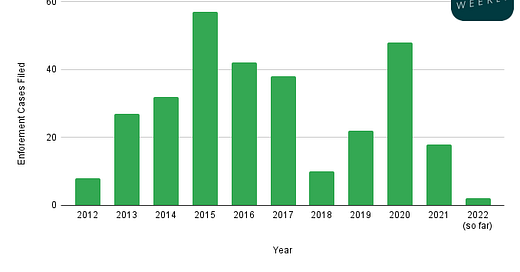Lots of Talk, Few Cases from CFPB; Fast Fails Furiously
Another Play-to-Earn Heist, the Return of "Zuck Bucks," VC Data Dump
Hey all, Jason here.
This time next week, I’ll be in NYC. Definitely looking forward to spending some time in town, both for NYC Fintech Week and to catch up with old friends. If you’re in NYC, hopefully I’ll see you around town at some of the great events that are planned!
Existing subscriber? Please consider supporting this newsletter by upgrading to a …



